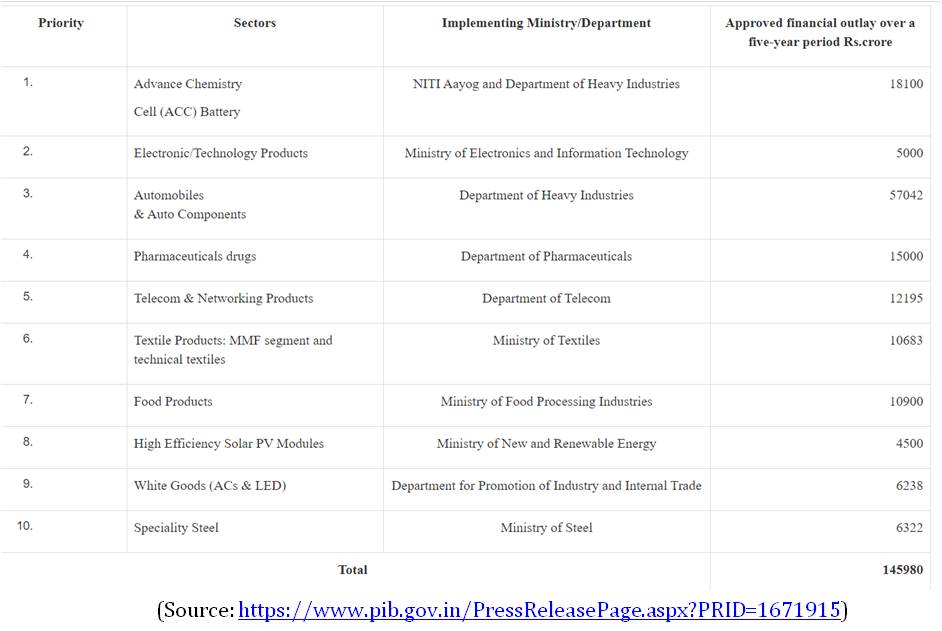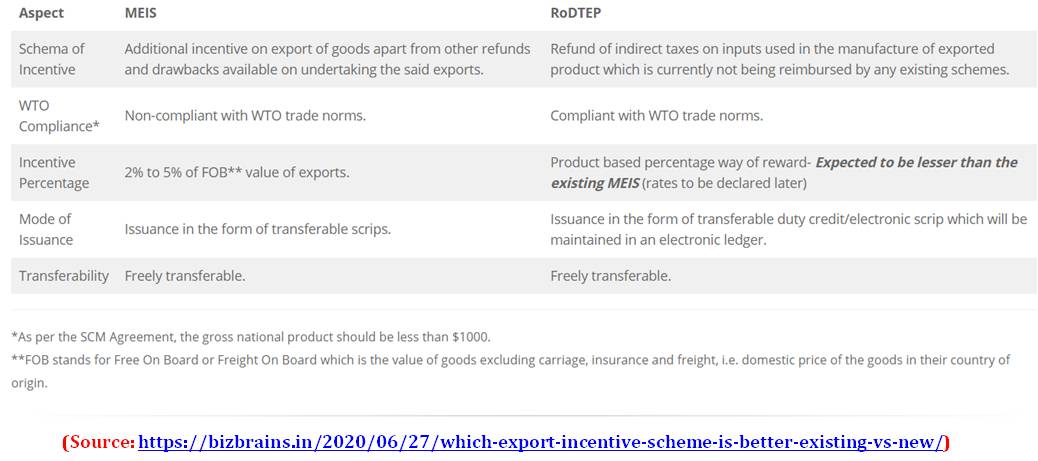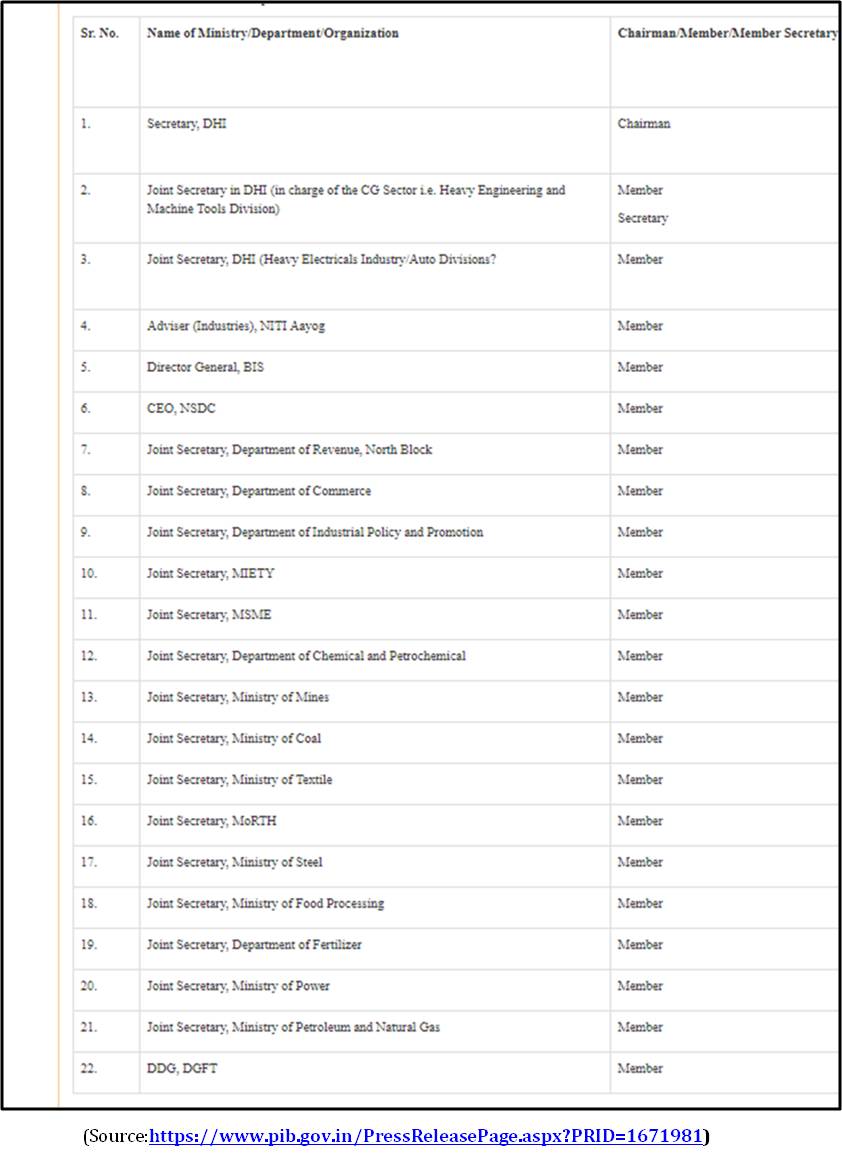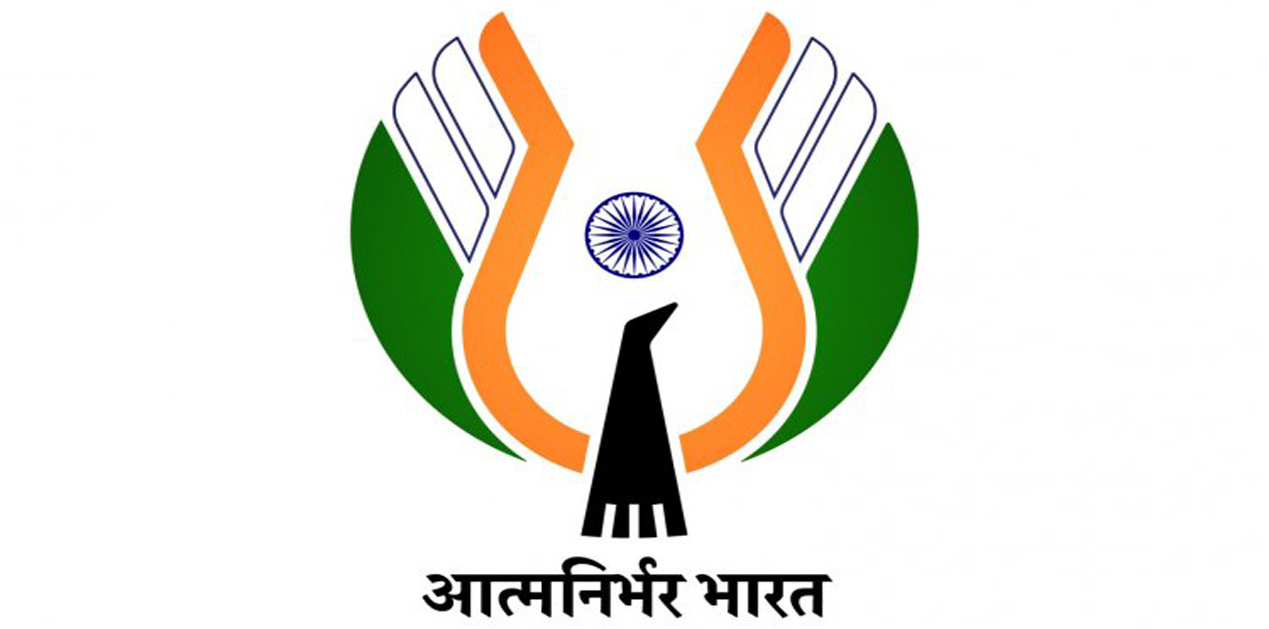The year 2020 can be described as an extraordinary year. COVID-19 wreaked havoc in all policy arenas, severely affecting public, economic, international relations. The Government of India meanwhile, has taken significant steps to promote the ‘Atmanirbharta’ initiative. As the ‘Unlock’ procedures have come into effect after the unprecedented national lockdown, the Centre came up with policies which will bolster India’s standing in ‘Ease of doing Business’, attract foreign investments and emerge as a viable alternative to become a manufacturing hub.
The article will give a brief view of top 10 policies /initiatives that the Government of India has launched, which would help India achieve self-reliance while encouraging domestic and foreign businesses to invest in India’s growth story.
- Cabinet approved the Central Sector Scheme of financial facility under the Agriculture Investment Fund
- Government of India amends rules to prevent Chinese Investments
- TIFAC Launches White Paper on Policy impetus to make India ATMANIRBHAR
- New Education Policy
- National Higher Education Regulatory Council (NHERC) for regulation,
- General Education Council (GEC ) for standard-setting,
- Higher Education Grants Council (HEGC) for funding,
- National Accreditation Council (NAC) for accreditation.4
- Defence Production and Export Policy
- Procurement Reforms, Indigenization & Support to MSMEs/Startups
- Optimize Resource Allocation, Investment Promotion
- FDI & Ease of Doing Business, Innovation and R&D, DPSUs and OFB
- Quality Assurance & Testing Infrastructure and Export Promotion5
- The New Major Port Authorities Bill passed in Lok Sabha
- Production Linked Incentives for India’s Champion Sectors
- Export Incentives are under review as new Foreign Trade Policy is formulated
- Inter-Ministerial Committee set up to bolster Capital Sector Goods
- Centre to launch Central Investment Clearing Cell
- "Cabinet Approves Central Sector Scheme of Financing Facility Under 'Agriculture Infrastructure Fund'." Press Information Bureau. July 08, 2020. Accessed =. https://www.pib.gov.in/PressReleasePage.aspx?PRID=1637221.
- "Amendment to General Financial Rules, 2017." NEXT IAS - Current Affairs Blog. July 27, 2020. https://blog.nextias.com/amendment-to-general-financial-rules-2017.
- "Dr. Harsh Vardhan Releases White Paper on 'Focused Interventions for 'Make in India': Post COVID 19' by TIFAC." PIB. July 10, 2020. https://pib.gov.in/newsite/PrintRelease.aspx?relid=210022.
- "NEP 2020: Implementation of New Education Policy in Our Education System." Hindustan Times. October 22, 2020. https://www.hindustantimes.com/education/nep-2020-implementation-of-new-education-policy-in-our-education-system/story-bw4OiekFCamI7NPoNkgAoJ.html#:~:text=The Union cabinet in July,pre-school to secondary level.&text=Hindustan Times/ File)-,The Union cabinet in July 2020 approved the New Education,pre-school to secondary level.
- "MoD Releases Draft Defence Production and Export Promotion Policy 2020." Press Information Bureau. August 03, 2020. https://pib.gov.in/PressReleasePage.aspx?PRID=1643194.
- "The Major Port Authorities Bill, 2020." PRSIndia. March 18, 2020. https://www.prsindia.org/billtrack/major-port-authorities-bill-2020.
- "Cabinet Approves PLI Scheme to 10 Key Sectors for Enhancing." Press Information Bureau. November 11, 2020. https://www.pib.gov.in/PressReleasePage.aspx?PRID=1671915.
- "Remission of Duties and Taxes on Exported Products (RoDTEP) Scheme Gets Implemented from 01.01.2021." Press Information Bureau. December 31, 2020. https://pib.gov.in/PressReleaseIframePage.aspx?PRID=1685206.
- "Government Sets up Inter-Ministerial Committee to Strengthen the Capital Goods Sector." Press Information Bureau. November 11, 2020. https://pib.gov.in/Pressreleaseshare.aspx?PRID=1671981.
- Sen, Amiti. "Centralised Investment Clearance Cell by April 15." December 21, 2020. https://www.thehindubusinessline.com/economy/centralised-investment-clearance-cell-by-april-15/article33386888.ece.
The Agri-Infra fund is a part of the Rs 20 Lakh Crore stimulus package Prime Minister Modi announced in response to COVID-19. The scheme approved by the Cabinet in July 2020 would provide Rs 1 Lakh Core to banks and financial institutions. The loans will be provided to the stakeholders involved in Agriculture Infrastructure. The Cabinet’s decision is to ensure short and medium term financing facility for viable projects which includes supporting agri-entrepreneurs, agri-tech players, start-ups and farmer groups for logistical facilities and infrastructure.1
As the border row continued to intensify, the Centre took calculated decisions to prevent Chinese investment. However, the most well-known action taken by the Centre at the time was banning Chinese apps, which the Indian media termed as “Digital-Strike”. One of the significant actions taken by the Centre was to prevent public procurement from China or any other country with which India shares a land border; this was resorted to on the grounds of national security.
General Financial Rules of 2017 have been amended to ensure that any procurement bid from these countries (including consultancy and non-consultancy services) has to go through a Competent Authority. In this case, the Competent Authority is the Registration Committee constituted by the Department for Promotion of Industry and Internal Trade (DPIIT). Clearance from the Ministry of Home Affairs and External Affairs will be mandatory.2
The Technology Information, Forecasting and Assessment Council launched a White Paper highlighting the trends and market strengths of five essential sectors: healthcare, manufacturing, ICT, electronics, machinery and agriculture. The paper discusses the supply and demand in these sectors while discussing self-sufficiency and mass-scale capacity. The paper also discusses the importance of developing technology clusters in champion segments, which will help create technology start-up exchange while identifying, piloting, and supporting ten blockbuster technologies. Ideas have also been discussed to collaborate with incubators based out of Germany, Israel and evolving technology platforms in sunrise technologies.3
The New Education Policy is one of Centre’s comprehensive long term policy plans to make India a research and development powerhouse. The Centre and the states will be working together in the future to increase investment in the education sector to reach 6 per cent of the GDP. The apex body known as the National Research Foundation, will be created, which will help foster a strong research culture and build research capacity across higher education. The Higher Education Commission of India (HECI) will be set up as an umbrella body for higher education (excluding legal and medical education). The HECI will have four independent verticals;
Under the Atmanirbharta Bharat program, a push to self-reliance in defence manufacturing has been emphasized in the policy which will position India among the leading countries in defence and aerospace sectors. The policy will help provide a structured and significant thrust to defence production and India becoming a part of the global defence value chains. It also encourages creating Indian Intellectual Property (IP) ownership which promotes a robust and self-reliant industry. By 2025 the policy aims for a turnover of Rs. 1,75,000 Crores which includes the export of Rs. 35,000 Crore in the aerospace and defence sector. Other areas prioritised include;
The bill aims to provide for the regulation, operation and planning of major ports in India. Meanwhile, it also vests the administration, control and management of India’s 12 major ports to their respective boards. The intention was to replace the Major Port Trusts Act, 1963 by reducing the sections from 134 to 76 (eliminating obsolete and overlapping sections). Another sweeping change in the functioning of ports is redefining the role of Tariff Authority for Major Ports (TAMP) redefined as Port Authority and given the powers to fix tariffs and additional powers to the Port Boards include entering into contracts, planning and development.6
The Centre has given Rs 2 Lakh Crore worth of incentives to 10 sectors. The automobile industry is the biggest beneficiary of the Production Linked Incentives (PLI). The Centre’s plan for PLI is also to propel Indian mobile phone manufacturing to the next level, which would encourage tech-giants like Apple to start manufacturing operations in India. India is expected to have a USD 1 trillion digital economy by 2025 which means that data localization, the internet of things, Smart City projects, and Digital India would increase the demand for electronic products. Other sectors include pharmaceuticals, Battery manufacturing, Photo-voltaic sector, and textiles and steel.7

The Centre has been reviewing key export incentive schemes, especially for the service sector, which was hit hardest by COVID-19. The Service Export from India Scheme (SEIS) covers nine broad sectors, including business services, communication, construction and tourism. The Merchandise Exports from India Scheme (MEIS) has been replaced by Remission of Duties or Taxes on Export Product (RoDTEP) which is compliant to WTO trade norms. The RoDTEP will cover reimbursement of taxes such as Mandi Tax, VAT on fuel used for transportation, duty on electricity during manufacturing, and refund for exports.8

A 22 member committee was set up in November 2020 which would help India achieve the USD 5 Trillion economy and USD 1 Trillion in the manufacturing sector. The committee aims to ensure that India’s capital sector goods are globally competitive. The committee shall provide a holistic view to the Department of Heavy Industries about all issues about the sector. The Inter-Ministerial Committee will be under the Secretary, Department of Heavy Industries' Chairmanship, and meet quarterly with senior-level officers from various Ministries and Departments.9

The Central Investment Clearing Cell is a part of the Ministry of Commerce’s plan to create a Single Window System. The Clearing Cell is set to be launched by April 2021. The decision to create a system like this ensures that an investor gets all permissions and required information from one platform. At the time, there are several IT platforms which assist in investing in India in various departments of Government of India and State Single Window Clearance. It addresses these multiple platforms while providing end to end facilitation support, including pre-investment advisory and other information.10
Conclusion
2020 also saw the Centre launching the National Digital Health Mission, while it formulates a National Cyber Security Policy as well as a new Data Centre Policy which is due to come out soon. In response to the launch of the National Digital Health Mission, the Centre has proposed a framework which has set minimum standards of data protection with applicable laws and legislation.
The policies as highlighted above are among many initiatives that the Government of India has or is starting to implement to achieve the goal of self-reliance. The Centre is also planning to launch the ‘Brand India’ mission which would help spearhead India’s image as a stable investment destination with the help of initiatives to help ease of doing business. Future policy initiatives also include adoption of E20 fuel, Indian Ports Bill, research and development centers on Lithium-Ion technology, and to end India’s ‘energy poverty’.
Reference
(The paper is the author’s individual scholastic articulation. The author certifies that the article/paper is original in content, unpublished and it has not been submitted for publication/web upload elsewhere, and that the facts and figures quoted are duly referenced, as needed, and are believed to be correct). (The paper does not necessarily represent the organisational stance... More >>
Image Source: https://apekshanews.com/Backoffice/uploads/images/image_750x_5f0c6f8aef126.jpg











Post new comment